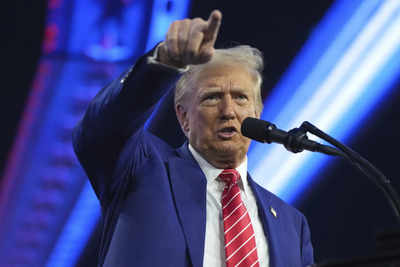Two weeks before President-elect Donald Trump’s inauguration, his team is considering significant changes to his campaign promise to impose sweeping tariffs on all imports. Instead of the blanket tariffs that Trump advocated during his 2024 campaign, his advisers are discussing stricter measures aimed at critical sectors of the economy, according to sources familiar with the matter.
The original proposal for “universal tariffs”, which called for import taxes up to 20%, has faced criticism for its potential to increase prices of everyday goods such as food and electronics, causing political and economic disruption. Now, Trump’s advisers are leaning toward imposing tariffs only on select industries considered vital to national development and economic security.
Focus on critical industries
Discussions have focused on sectors such as:
- Defense: Steel, aluminum, iron and copper to reinforce the military supply chain.
- Medical care: medical supplies such as syringes, needles and pharmaceutical components.
- Energy: rare earth minerals, batteries and solar panels to strengthen energy independence.
By narrowing the scope, Trump’s team aims to mitigate the economic shock while incentivizing companies to bring manufacturing back to the United States. A source familiar with the deliberations described the approach as “a common sector-based tariff” that would be easier to implement initially.
Inflation and political calculations
The change in strategy reflects growing concerns about inflation, which remains stubbornly high despite the Federal Reserve’s actions. Broad tariffs could exacerbate price increases, hurting both consumers and businesses. Politically, the revised plan seeks to avoid backlash from congressional Republicans and voters fearful of rising costs.
Implications for international trade
If implemented, the tariffs would represent a significant challenge to the international trading system, potentially leading to retaliation from the United States’ trading partners. The plan could also interact with other Trump proposals, such as a 25% tariff on goods from Mexico and Canada and an additional 10% on Chinese imports, measures linked to reducing migration and drug trafficking. It is not yet clear whether these additional tariffs will be applied alongside the sectoral approach.
A high-risk economic bet
While the targeted approach is seen as a compromise, it still represents one of the most aggressive trade policies in decades. Trump advisers maintain that relocation manufacturing jobs It is essential to the economic future of the United States, even if it implies short-term disruptions.
Domestic planning is being led by key figures in the incoming administration, including Vince Haley, who is expected to head the White House Domestic Policy Council, and Scott Bessent and Howard Lutnick, Trump’s picks for Treasury secretary and secretary of state. Commerce, respectively.
“The idea is, if universal tariffs are going to be implemented, why not at least start with these specific measures?” said a source. “It still gives CEOs a huge incentive to start making their products here.”
While planning continues, no final decisions have been made. But the emerging strategy indicates that Trump’s trade policies could reshape the American economy and international trade for years to come.





